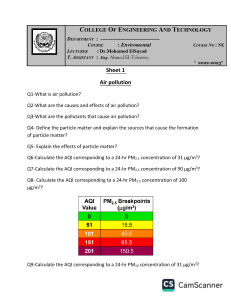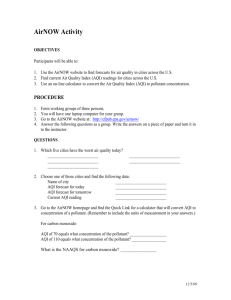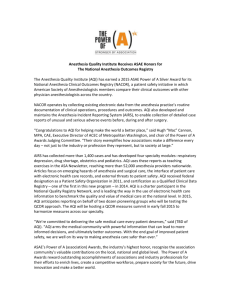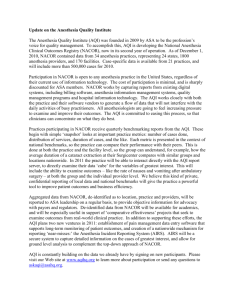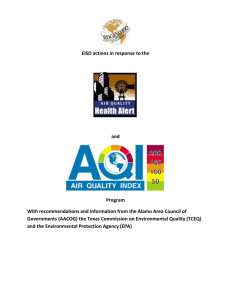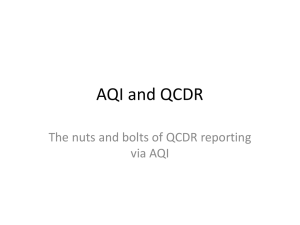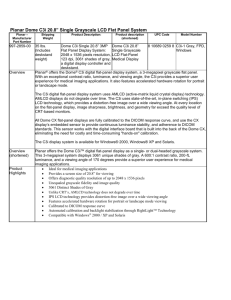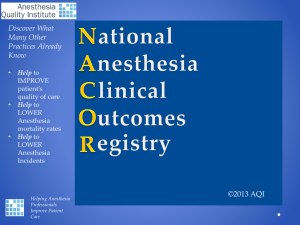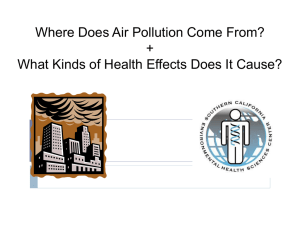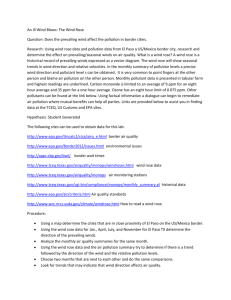National Air Quality Index PPT
advertisement
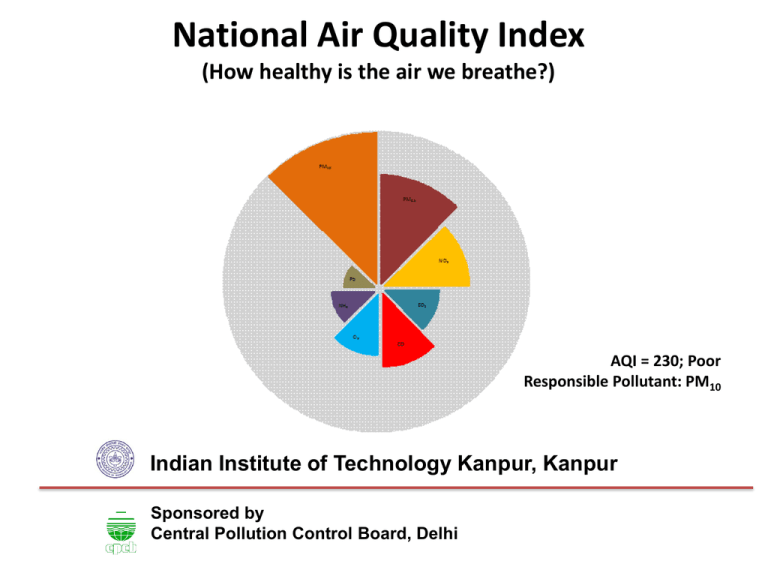
National Air Quality Index (How healthy is the air we breathe?) AQI = 230; Poor Responsible Pollutant: PM10 Indian Institute of Technology Kanpur, Kanpur Sponsored by Central Pollution Control Board, Delhi Are we affected by poor AQ? • The very young are at risk – Lungs are not fully developed – Faster breathing rate: more air volume/body weight • The very old are at risk – Undiagnosed lung or heart diseases – Pollution can exacerbate these conditions • Persons with chronic illnesses: Respiratory, circulatory, or cardiac diseases Yes, EVERYONE! • Even healthy persons can be affected when they exercise outdoors, or if the concentration of pollutants is very high How do we know if Air Quality is poor? AQI is an overall scheme that transforms individual air pollutant (e.g. SO2, CO, PM10) levels into a single number, which is a simple and lucid description of air quality for the citizens. AQI relates to health impacts and citizens can avoid the unnecessary exposure to air pollutants; AQI indicates compliance with National Air Quality Standards; AQI prompts local authorities to take quick actions to improve air quality; AQI guides policy makers to take broad decisions; and AQI encourages citizens to participate in air quality management. Pollutants Considered for AQI and Air Quality Standards CO (mg/m3) Pollutant SO2 NO2 PM2.5 PM10 O3 Averaging time (hr) 24 24 24 24 1 8 1 Indian Standard (µg/m3) 80 80 60 100 180 100 4 Pb NH3 8 24 24 2 1 400 Development of Aggregate AQI Sub-indices to AQI AQI = Max [I1, I2,..,In] Internationally Accepted Scheme Air Quality Index AQI AQI Categories and Range Good (0-50) Satisfactory (51-100) Moderate (101-200) Poor (201-300) Very poor (301-400) [Colour, Category, AQI Number] Severe (> 401) AQI categories and breakpoint concentrations with averaging times (units: µg/m3 unless mentioned otherwise) AQI Category (Range) PM10 24-hr PM2.5 24-hr NO2 24-hr O3 8-hr SO2 24-hr NH3 24-hr Pb 24-hr 0-50 51-100 CO 8-hr (mg/m3) 0-1.0 1.1-2.0 Good (0-50) Satisfactory (51-100) Moderate (101-200) Poor (201-300) Very poor (301-400) Severe (401-500) 0-50 51-100 0-30 31-60 0-40 41-80 0-40 41-80 0-200 201-400 0-0.5 0.6 –1.0 101-250 61-90 81-180 101-168 2.1- 10 81-380 401-800 1.1-2.0 251-350 91-120 181-280 169-208 10.1-17 381-800 801-1200 2.1-3.0 351-430 121-250 281-400 209-748* 17.1-34 801-1600 1201-1800 3.1-3.5 430 + 250+ 400+ 748+* 34+ 1600+ 1800+ 3.5+ *One hourly monitoring (for mathematical calculation only) AQI: Health Impacts AQI Possible Health Impacts Good minimal impact Satisfactory minor breathing discomfort to sensitive people Moderate breathing discomfort to the people with lung disease such as asthma and discomfort to people with heart disease, children and older adults Poor breathing discomfort to people on prolonged exposure and discomfort to people with heart disease with short exposure Very Poor respiratory illness to the people on prolonged exposure. Effect may be more pronounced in people with lung and heart diseases Severe respiratory effects even on healthy people and serious health impacts on people with lung/heart diseases The higher the AQI, greater the air pollution and health concerns Web-based AQI dissemination Summary • AQI: Based on Indian Air Quality Standards • Important tool for public information and participation; real-time and transparent • Public health protection • Trigger actions by regulatory agencies • Time-bound action plan and implementation • Continuous monitoring of Air Quality status
